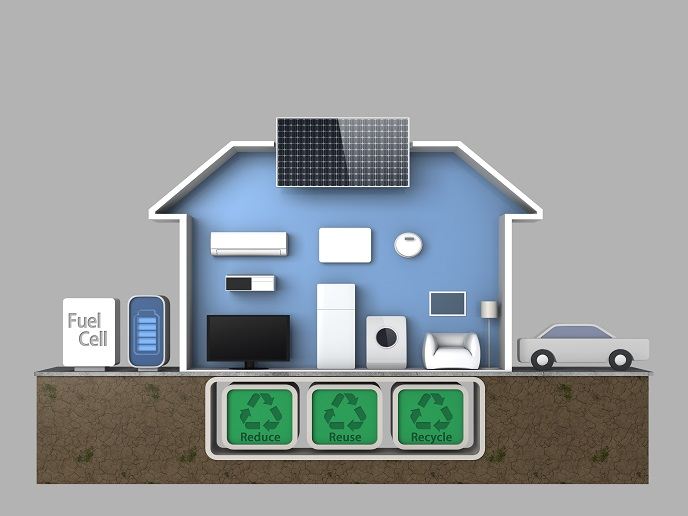A giant leap to commercialisation for residential fuel cell combined heat and power
A decade ago, the generation of electricity and heat with no pollution and considerably fewer greenhouse gas emissions sounded too good to be true for residential applications. Stationary fuel cells are now a promising alternative to combustion engines for electricity production and the cogeneration of heat as part of micro combined heat and power (micro-CHP) systems.
Shrinking the cost of the main fuel cell components
Amongst the various types of micro-CHP, fuel cell cogeneration systems can reach 90 % efficiency (60 % electric and the remainder as thermal). Their low heat-to-power ratio means that they are well suited to the evolving trend in homes towards higher electricity use and low space heating demand. Despite their great potential for residential applications, micro-CHP systems have not yet reached the commercial stage. New advances introduced by the EU-funded HEATSTACK project seem to help overcome the high capital cost challenge that has so far prevented commercial roll-out of the technology. The major focus has been on reducing production costs of the two most expensive components of the fuel cell system: the fuel cell stack and heat exchanger, which account for the greatest part of fuel cell capital costs. Researchers built on the success of a state-of-the-art micro-CHP system that uses a solid oxide fuel cell (SOFC) stack developed by project partner Sunfire. To date, this system has undergone extensive field trials as part of European-wide residential fuel cell micro-CHP deployment initiatives, and it is one of the most promising SOFC cogeneration technologies nearing commercial deployment. The system uses an innovative cathode air preheater (CAPH) based on a novel gas-to-gas heat exchanger that provides air at a specified temperature to the fuel cell stack. Decreasing the costs of the SOFC stack and CAPH will render fuel cell micro-cogeneration more cost competitive and attractive to the market.
Automating manual tasks
“Sunfire’s Home micro-CHP system offers efficient cogeneration of power and heat for houses and runs on cost-efficient fuels – either liquefied petroleum gas or natural gas,” explains project engineer Frank Mittmann. To reach series production, several processes have to be automated. One of those processes is to eliminate manual work and automatically apply the glass sealant onto the SOFC stack repetition units. “In the course of HEATSTACK, Sunfire optimised the process of printing the glass paste onto the repetition unit with the use of a step stencil, achieving 10 % savings in the total SOFC stack costs,” adds Mittmann. R&D engineers produced 10 prototype SOFC stacks with printed glass and conducted thorough tests on their mechanical compatibility, electrical properties and long-term stability. The optimised SOFC stack was integrated into Sunfire’s Home micro-CHP units. Further performance tests on system level were conducted, showing that the technologies demonstrated by HEATSTACK are ready for use in mass production.
Utilising AluChrom in the CAPH
Project researchers developed tooling and processes that reduced CAPH manufacturing time from 9 to 2.5 hours. They also demonstrated a considerable reduction in chromium evaporation by using a resistance heating alloy called AluChrom, rather than Inconel 625, for the heat exchange plates in the CAPH. Pre-heat treatment of the AluChrom proved to extend SOFC lifetime, thus reducing overall maintenance costs.
Keywords
HEATSTACK, micro-CHP, SOFC, combined heat and power, fuel cell stack, heat exchanger, solid oxide fuel cell, cathode air preheater



